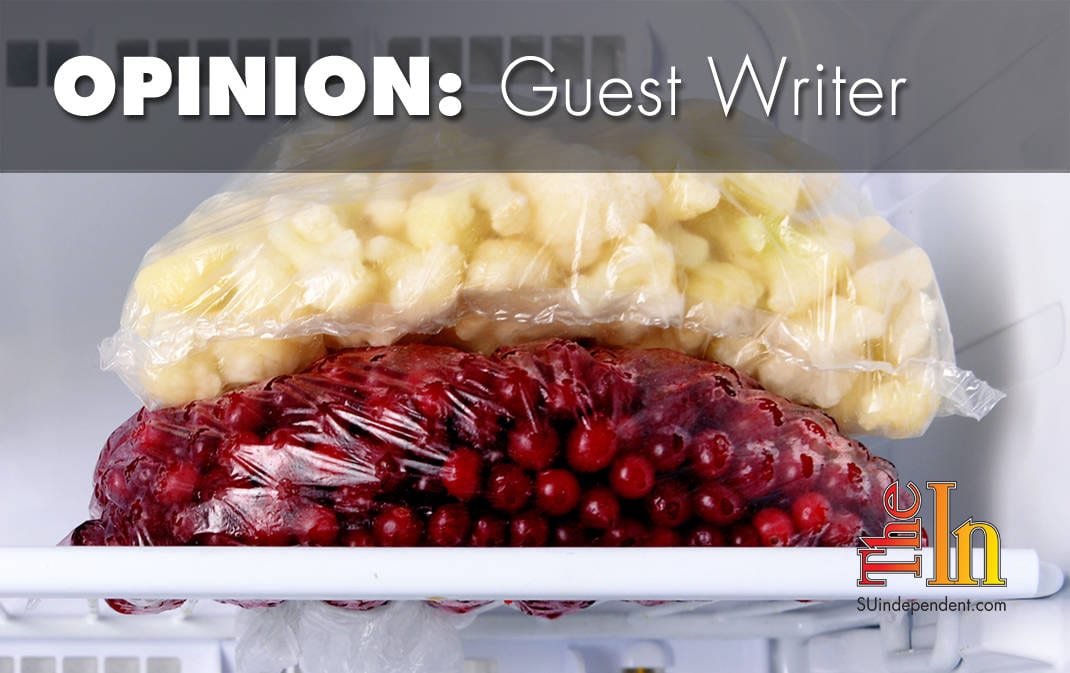 Written by Kathy Riggs
Written by Kathy Riggs
Many foods freeze well and are great to have on hand for family meals. It may take a spring-cleaning event to get freezer compartments cleaned, organized, and ready for more food, but it will be well worth the effort. Consider the following freezer tips from the Food Safety and Inspection Service.
Choose appropriate and high quality food
As with other methods of home food preservation, choose foods at optimum freshness when freezing. For example, if you have fresh meat that has been in the refrigerator for several days before you decide to freeze it, the quality, once thawed, may be marginal at best. Not all foods freeze well. Such things as mayonnaise, cream sauce and lettuce may be frozen, but once thawed they are generally not very appetizing.
Package correctly
Proper packaging helps maintain quality and prevent freezer burn. It is safe to freeze meat or poultry in the original packaging, however this type of wrap is permeable to air, and quality may diminish over time. For prolonged storage, overwrap these packages as you would any food for long-term storage. It is not necessary to rinse meat and poultry. Freeze unopened vacuum packages as is. If you notice that a package has accidentally been torn, the food is still safe to use; it will just need to be rewrapped or overwrapped.
Freeze quickly
Freeze foods quickly to maintain quality. Rapid freezing prevents large ice crystals from forming on and throughout the food. This may require dividing food into smaller containers or packages.
Watch for freezer burn
Basic guidelines for how long foods will store well in the freezer can be found here. However, freezer life also depends on how well the food is packaged and the temperature of the freezer compartment (0 degrees F. or lower is recommended). It is especially important to double or triple wrap foods to prevent exposure to the circulating air in a frost-free freezer since it will dry out foods and make them more susceptible to freezer burn. Freezer burn does not make foods unsafe, but it diminishes quality. It appears as grayish-brown leathery spots and is caused by air coming in contact with the surface of the food. Cut freezer-burned portions off either before or after cooking. Foods with heavy freezer burn may have to be discarded for quality reasons.
Date and rotate
Write the storage date on foods, and rotate packages regularly (place newest/freshest in the back and move older foods to the front or top) to prevent having to throw away older food that has been pushed to the back and forgotten. Freezing does not stop foods from ripening or stop enzymes, but it does substantially slow the process.
Practice safe thawing
Never thaw foods in the garage or basement or on the kitchen counter. Three safe ways to thaw food are in the refrigerator, in cold water, or in the microwave. It is best and safest to thaw in the refrigerator. Small items may defrost overnight; most foods require a day or two. Large items like turkeys may take longer. Approximately 1 day for each 5 pounds of weight is recommended. For faster thawing, place food in a leak-proof plastic bag and immerse in cold water. Check the water frequently to be sure it stays cold, and change it every 30 minutes. After thawing, cook immediately. When microwave-defrosting food, cook it immediately since some areas of the food may begin to cook during microwaving.
Freezers are indeed a convenience to keep food on hand and to store large quantities of food. See the Food Safety and Inspection Service site, or contact your local USU Extension office for answers to specific questions.
Kathy Riggs is a Utah State University Extension family and consumer sciences professor. She can be reached at kathleen.riggs@usu.edu or (435) 586-8132.



